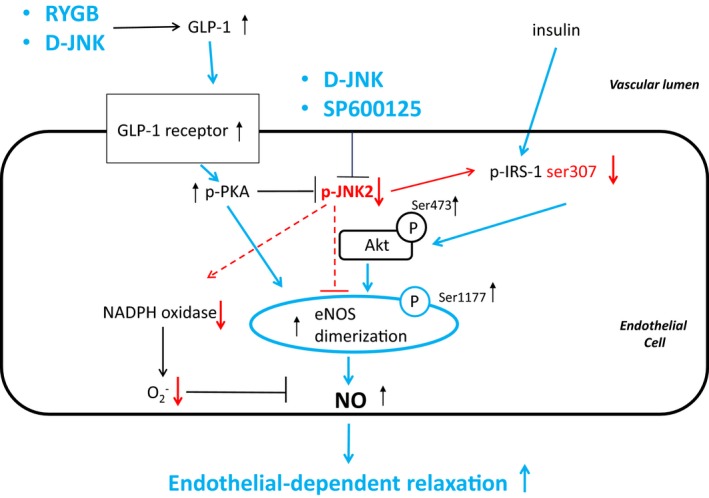Figure 6.

Proposed mechanism(s) underlying the improvement of endothelium‐dependent vasodilation after Roux‐en‐Y gastric bypass (RYGB). Higher circulating glucagon‐like peptide‐1 (GLP‐1) after RYGB activates the endothelial GLP‐1 receptor and downstream protein kinase A (PKA), which inhibits c‐Jun N‐terminal kinase (JNK) 2. JNK2 directly inhibits endothelial NO synthase (eNOS) and insulin receptor substrate‐1 (IRS‐1) in the insulin signaling pathway; PKA and IRS‐1 lead to protein kinase B (Akt) activation, which then directly stimulates eNOS. This, in turn, leads to improved NO bioavailability and vasodilation. In parallel, JNK2 inactivation inhibits reduced nicotinamide ADP (NADPH) oxidase activity and decreases the levels of superoxide anions, which further contributes to preserved NO bioavailability and vasodilation. These beneficial effects of RYGB were mimicked by in vivo pharmacological JNK inhibition. Blue and red arrows indicate experimentally observed activation and inactivation, respectively, of proposed downstream mediators. D‐JNK indicates peptide inhibitor D‐JNKi‐1; and p, phosphorylated.
